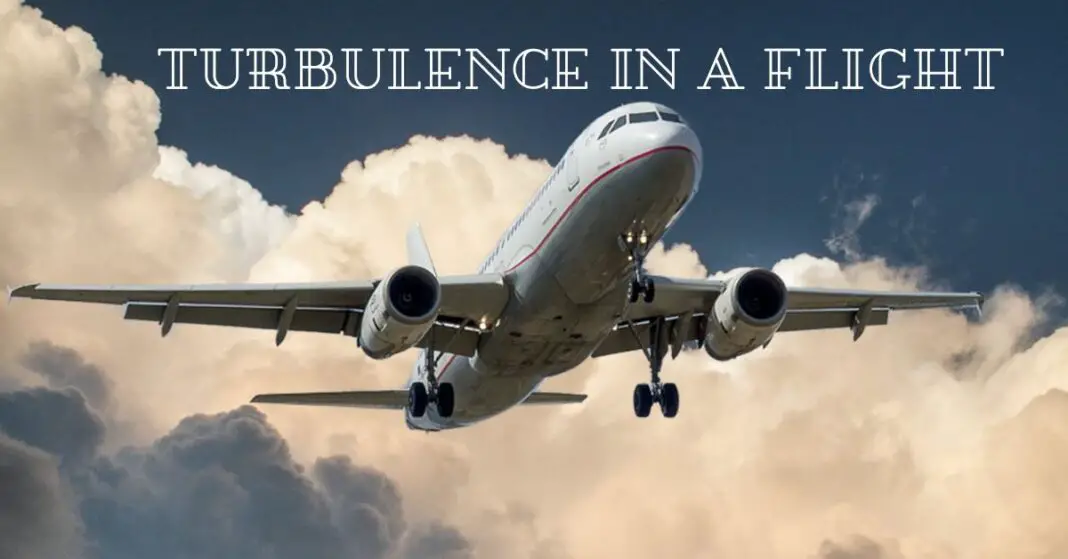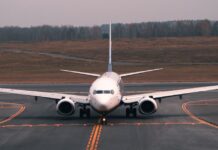Many of us have seen the “Fasten Seat Belt” signs flicker on during flights and felt the unsettling sensation of turbulence while thousands of feet up in the sky. Despite being a common occurrence, little discussion goes beyond the basic knowledge of turbulence as patches of rough air. By tapping into the complex world of physics, technological advancements, and human cognition, we begin to unlock the in-depth understanding of airplane turbulence.
We start by diving into the physics that describes the bumps and drops during flights. Next, we learn about the revolutionary technologies developed to counteract turbulence and its impacts. Lastly, we evaluate the human aspect, understanding the psychological responses towards turbulence and strategies used in mitigating turbulence-related anxiety.
Table of Contents
The Physics of Airplane Turbulence
At its core, it’s the irregular motion of air caused by atmospheric pressure changes. The aircraft’s wings create lift due to the difference in air pressure above and below the wing surface.
When a plane crosses patchy regions of rapidly changing air pressure, the variations in lift cause the turbulent sensation passengers feel.
Turbulence can also occur when a plane moves through different air masses of varying temperatures or speeds, or when high winds near the ground interfere with the smooth airflow under the wings during take-off or landing. Additionally, jet streams – bands of strong high-altitude winds – can cause turbulence when a plane transitions between fast and slow-moving layers.
Understanding vortices or whirlpools of air sheds light on another aspect of turbulence. When a plane wing slices through the air, it creates these air vortices. This resultant swirling air, especially in crowded airspace, can also cause an airplane to momentarily shudder or shake, experienced as turbulence.
Through physics, it becomes apparent that this in-flight occurrence, although unsettling for many, is a natural aspect of air travel largely impacted by atmospheric conditions and aerodynamic responses.
Technological Innovations to Mitigate Airplane Turbulence
While the unpredictable dynamics of the atmosphere might forever be a part of air travel, advancements in technology have significantly taken giant strides in minimizing the discomfort and risks associated with airplane turbulence.
Cogently, technology serves as an invaluable tool in the steady quest for a smoother flight experience.
One such technological advancement is the utilization of Laser technology in detecting turbulence.
In essence, LIDAR (Light Detection and Ranging) systems have been adapted for aviation use, allowing pilots to detect turbulent air masses from several kilometers away.
These LIDAR systems use lasers to monitor the air in front of the plane for dust or other particles that could suggest the presence of turbulence, thereby allowing pilots to adjust the flight path in anticipation of such disturbances.
Moreover, airplanes today are increasingly equipped with more advanced autopilot systems.
These advanced systems are designed to be highly responsive and capable of reacting to turbulence significantly faster than a human could, helping to ease the plane through rough patches with minimal discomfort for passengers.
The autopilot system constantly evaluates the plane’s performance in response to changing environmental conditions – such as the onset of turbulence – and applies the optimal control inputs to maintain a smooth and stable flight.
Furthermore, meteorological forecasting improvements form an integral part of technology’s rightful place in managing turbulence.
Leveraging high-speed computing and increasingly accurate atmospheric models, it is becoming possible to map turbulence-creating conditions along flight paths in near real time.
This enables airlines to plan alternate routes and adjust flight plans even while the aircraft is air-bound, creating a significant leeway for mitigating the impact of turbulence on flights.
In this grand scheme of employing technology to tame the air, it may well be postulated that the future of turbulence-free flight, though elusive still, is not entirely out of reach.
Human Factor: Perceiving and Coping with Airplane Turbulence
The human dimension of airplane turbulence goes beyond mere physical discomfort or momentary fear. Indubitably, investigators in the psychology realm map a landscape of significant turbulence-induced stress, anxiety, and other psychosomatic outcomes among passengers and crew alike.
In a survey conducted by the International Air Transport Association involving 8,000 respondents, one in three declared frequent flyers have had their travel satisfaction affected by concerns derived from experiencing turbulence. This psychological fallout, intriguingly, is often more related to perceived threat rather than actual physical danger.
The exogenous effects of turbulence trigger intricate patterns of psychological responses that operate on the terrain of fear and anxiety. Broadly termed Aerophobia, or fear of flying, this condition is accentuated by turbulence and is quite prevalent.
Symptoms can include excessive sweating, shaking, rapid heartbeat, gastrointestinal disturbances, and even panic attacks. Coping mechanisms for this fear often involve avoidance of air travel altogether or self-medication—using sedatives or alcohol.
For cabin crew, who face turbulence as a regular occupational hazard, there is heightened stress and mental fatigue that could potentially compromise their ability to work efficiently. Their role, as comfort-givers and safety ensurers, becomes immeasurably more challenging amid adverse aerial conditions.
Comprehensive training programs, including turbulence simulation exercises and resilience-building routines, play pivotal roles in preparing them to manage their psychological state amidst turbulence on flights.
Combatting these adverse psychological effects forms a crucial part of the broader turbulence management strategies adopted by airlines worldwide. Providing detailed in-flight instructions about turbulence, illuminating the Seat-Belt Sign, and even routinely reassuring announcements can help alleviate passenger anxiety. Airlines have leveraged advancements in in-flight entertainment systems and have made strides in providing distractions to passengers during turbulent events.
Amidst the rise of telemental health services, there has been increased access to pre-flight online therapy and in-flight support for individuals suffering from Aerophobia. While these strategies do not decrease the incidence of turbulence, they play an essential role in controlling its psychological toll on passengers and crew, paving the way towards making air travel a safer and more agreeable experience.
Ultimately, turbulence is a multifaceted phenomenon, at the intersection of meteorology, physics, engineering, and psychology. It is a product of high-speed air flows, pressure variations, and altitude differences.
Yet, technology strides forward in crafting solutions that minimize the discomfort and potential danger associated with it. Through instruments like Lidar, we can detect turbulence ahead of time. Airplane design improvements continue rendering aircraft more capable of absorbing turbulence impacts.
Further, recognizing and addressing negative human responses to turbulence has become a key area of focus. Indeed, the turbulence that rattles our nerves mid-flight is an extensive subject, extending far beyond temporary, rough patches in the sky. By shedding light on the intricacies of turbulence, we hope to demystify the experience and alleviate the fear associated with it.
Can turbulence bring a plane down?
Modern airplanes are constructed to endure significant turbulence, and instances of crashes resulting from them are exceedingly rare. The wings are specifically designed to flex and bend, autopilot systems work to maintain stability, and pilots undergo training to navigate through turbulent air. Although turbulence may cause discomfort for passengers, it is a routine aspect of flying and does not pose a significant threat to the safety of the aircraft.
What does a plane do in turbulence?
During turbulence, an airplane’s wings flex to absorb bumps, and the autopilot system adjusts controls to maintain stability. If necessary, pilots assume control, making adjustments or seeking smoother altitudes to ensure a safe and comfortable flight.
Do pilots get nervous during turbulence?
Pilots generally don’t experience “nervousness” during turbulence. They are trained to handle such situations, have confidence in the plane’s design, and prioritize safety over fear. While individual reactions may vary, their primary focus is on maintaining control and ensuring the well-being of everyone on board.
Is it hard to fly through turbulence?
Turbulence may cause physical discomfort for passengers, but it is not dangerous and does not pose a threat to the aircraft. Pilots are adept at managing turbulence, utilizing autopilot systems and their expertise to guarantee a safe flight for all onboard. The passenger experience varies based on individual perspectives and the severity of the turbulence.
What areas have the worst turbulence?
Regions characterized by mountains, such as the Rockies and Andes, the equatorial area with its Intertropical Convergence Zone and frequent thunderstorms, and other zones with robust jet streams, sudden weather changes, and high air traffic are recognized for encountering significant turbulence. Nevertheless, turbulence can manifest anywhere and at any time. Being aware of these regions can aid in mental and physical preparation for flights.






